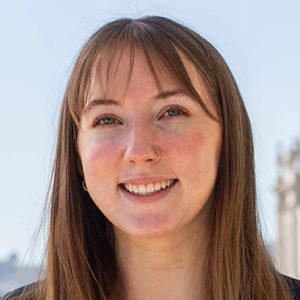
Appellate Decision Finds Tribal Developer is Indispensable Party to CEQA Litigation and Dismisses Lawsuit that Failed to Timely Name the Tribe
Jul 14, 2025In Citizens for a Better Eureka v. City of Eureka, the First Appellate District of the California Court of Appeal affirmed a Humboldt County Superior Court decision dismissing Petitioner’s lawsuit. (Cal. Ct. App., May 15, 2025, No. A170214.) The Court concluded that Petitioner Citizens for a Better Eureka (CBE) was required to join the Wiyot Tribe (the Tribe) as a real party in interest in its California Environmental Quality Act (CEQA) action against the City of Eureka (the City) and held that because CBE did not timely do so, and because the Tribe was a necessary and indispensable party, CBE could not maintain the lawsuit and that it had to be dismissed.
The Court’s ruling is important because it serves as a reminder that petitioners must name and serve all real parties in interest. Failure to name a real party in interest in a CEQA petition is grounds for dismissal of the action if the unjoined party is deemed to be a necessary and indispensable party. The ruling also clarifies that: (1) a “project” under CEQA is not limited to the approval itself, but includes all reasonably foreseeable consequences of the proposed activity; and (2) once the statute of limitations expires, if any necessary and indispensable real parties in interest are not named in the petition, the petition will be dismissed.
Legal Background
Under Public Resources Code Section 21167.6.5, a petitioner must name and serve “as a real party in interest, the person or persons identified by the public agency in its notice [of determination or notice of exemption].” Alternatively, if the public agency did not file a notice of determination or a notice of exemption, a petitioner must name and serve all real parties in interest as reflected in the agency’s record of proceedings for the project at issue. The petitioner “shall serve the petition [] on that real party in interest. . . not later than 20 business days following service of the petition [] on the public agency.” The goal of this rule is to ensure all necessary parties are properly joined so that a petitioner’s case may be fully adjudicated in one proceeding.
Public Resources Code Section 21167 contains a statute of limitations for instances where an agency has determined a project is exempt from CEQA and files a Notice of Exemption (NOE). Any lawsuit challenging the exemption determination must be filed within 35 days of the NOE. If a petitioner fails to name a real party in interest, but the statute of limitations has not yet expired, the real party in interest may be added without any problem.
However, if the statute of limitations has lapsed and a real party in interest has not been joined, there might be grounds for dismissal if the trial court determines the unjoined real party in interest to be necessary and indispensable. To determine whether a real party in interest is indispensable the following factors must be analyzed: (1) to what extent a judgment rendered in the person’s absence might be prejudicial to him or those already parties; (2) the extent to which, by protective provisions in the judgment, by the shaping of relief, or other measures, the prejudice can be lessened or avoided; (3) whether a judgment rendered in the person’s absence will be adequate; and (4) whether the plaintiff or cross-complainant will have an adequate remedy if the action is dismissed for nonjoinder. No one factor is determinative, but potential prejudice to the unjoined party is critically important.
Real party in interest developers are often necessary, but whether they are also indispensable is determined on a case-by-case basis. If the unjoined real party in interest is found indispensable and the statute of limitations period has expired, the case is required to be dismissed.
Factual Background
In 2023, the City of Eureka City Council (City Council) held a public hearing on its plan to develop affordable housing on a City-owned public parking lot. After the hearing, the City Council adopted a resolution authorizing “the reduction or removal of public parking at [the parking lot], to facilitate development of Affordable Housing Projects.” In conjunction with its Surplus Lands Act determination, the City Council found that “[t]he reduction or removal of parking to allow the sale or lease of the property is exempt from CEQA pursuant to the CEQA Guidelines.” The same day, the City Council authorized the release of a request for proposals for affordable housing projects on the parking lot.
One month after, CBE filed a petition for writ of mandate challenging the adoption of the resolution on the basis that it violated CEQA. The petition joined the City, the City Council, and Does 1 to 10 as respondents. In the petition, CBE alleged the project authorized by the resolution, i.e. the reduction/removal of public parking from the lot, was not exempt from CEQA pursuant to the exemption for “sales of surplus government property” because it focused on the sale of the parking lot without considering the future use of the land. The petition asserted that the whole of the action had a potential for resulting in direct or reasonably foreseeable indirect physical change to the environment.
Two months later, the City Council adopted a resolution selecting the Tribe as the affordable housing developer for the land. The resolution stated the new development was a “project” subject to CEQA, but was exempt because the project: (1) met the eligibility criteria for the affordable housing exemption; and (2) did not trigger the land use and environmental thresholds and exceptions for affordable housing and residential infill projects. The next day, the City filed a NOE identifying the Tribe as the real party in interest developer for the project. CBE did not file a timely new lawsuit to challenge this resolution nor did it timely amend its existing lawsuit to name the Tribe as a real party in interest.
Five months later, the City and the Tribe executed a Memorandum of Understanding regarding the affordable housing development. The same day, CBE filed a motion for preliminary injunction seeking to enjoin respondents from issuing any approvals necessary for the construction of the project.
Two months later the Tribe specially appeared and moved to dismiss CBE’s petition because, among other things, the Tribe was a necessary and indispensable party to the action. In support of its motion, the Tribe provided a declaration stating it had invested significant time and resources toward the planning and development of the project including executing contracts to acquire funding.
CBE opposed the motion to dismiss on the grounds that the Tribe is not an indispensable party because the petition challenged the decision to remove parking from the lot, not the award of rights to the Tribe to develop affordable housing at the site. Further, CBE stated that the petition predated the Tribe’s agreements with the City for development of affordable housing and any prejudice due to a judgement was speculative.
In reply, the Tribe argued it could not be joined to the action because the limitations period to challenge the decision identifying the Tribe as the developer had lapsed. The trial court granted the Tribe’s motion and dismissed CBE’s action without prejudice.
Appellate Court Ruling
On appeal to the First Appellate District, CBE contended its petition did not implicate the Tribe because it solely challenged the reduction of parking resolution which was before the Tribe was awarded development rights and identified in the NOE.
As to this contention, the Court held that CBE’s narrow interpretation of “project” under CEQA was incorrect and the definition of “project” included “the whole of an action” which, under CEQA, necessarily also includes all reasonably foreseeable consequences of the proposed action.
The Court found that the Tribe was a real party in interest under Public Resources Code Section 21167.6.5 because the Tribe was awarded the development rights to build the affordable housing project and was identified in the NOE. The Court concluded that CBE had a duty to add the Tribe as a real party in interest when the NOE and award of development rights occurred. This is aligned with the statute’s goal of joining all necessary parties before proceeding with the merits of the action.
Further, the Court found that the statute of limitations barred joinder of the Tribe in this action. A petition to challenge a CEQA exemption determination must be filed within 35 days of the NOE and the respondent agency and all real parties in interest named on the respondent agency’s NOE must be named in the petition. In addition, petitioners must serve the respondent agency within 10 business days of filing the CEQA lawsuit and must also serve all real parties in interest identified by the public agency in its NOE no later than 20 business days following service of the petition on the public agency. CBE had timely filed and served its petition against the City, but never attempted to join the Tribe or serve the Tribe with the lawsuit despite being aware of the NOE.
Due to the Court’s findings that the Tribe was both a necessary and indispensable party and that it was too late to join them, the Court granted the Tribe’s motion to dismiss the lawsuit.
Under the first factor of indispensability, the Court found that the Tribe would be prejudiced if CBE’s petition was successful because the Tribe would be prevented from moving forward with plans to redevelop the property and work already completed would be jeopardized.
Under the second factor, the Court found that prejudice to the Tribe could not be avoided or lessened through the shaping of relief. The Court found that because removal of the parking lot was a prerequisite to the development of affordable housing, any judgment for or against CBE without the presence of the Tribe would prejudice the Tribe.
Under the third factor, the Court found that the Tribe’s interests were not sufficiently aligned with any existing parties’ interests because the Tribe’s role in developing, building, managing, and operating the project creates a distinct economic interest from respondent’s interest in adding affordable housing.
Under the fourth and final factor, the Court found that whether CBE would have an adequate remedy if the action were dismissed was neutral. However, given that the other three factors weighed in favor of dismissal, the Court dismissed CBE’s petition.
* * *
Burke, Williams & Sorensen, LLP regularly advises clients on legal matters relating to land use and development projects, including the Permit Streamlining Act and CEQA.
All materials have been prepared for general information purposes only to permit you to learn more about our firm, our services and the experience of our attorneys. The information presented is not legal advice, is not to be acted on as such, may not be current and is subject to change without notice.
Lillian Rupp, a Burke Summer Associate for 2025 (UC Law San Francisco ’26) who is based in the firm’s San Francisco office, served as the lead author of this Public Law Insight, along with Burke Partner Stephen E. Velyvis.

Lillian Rupp


